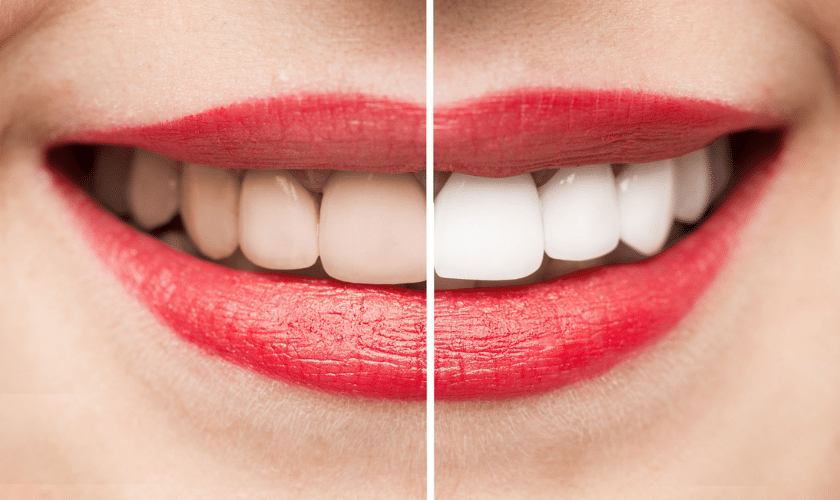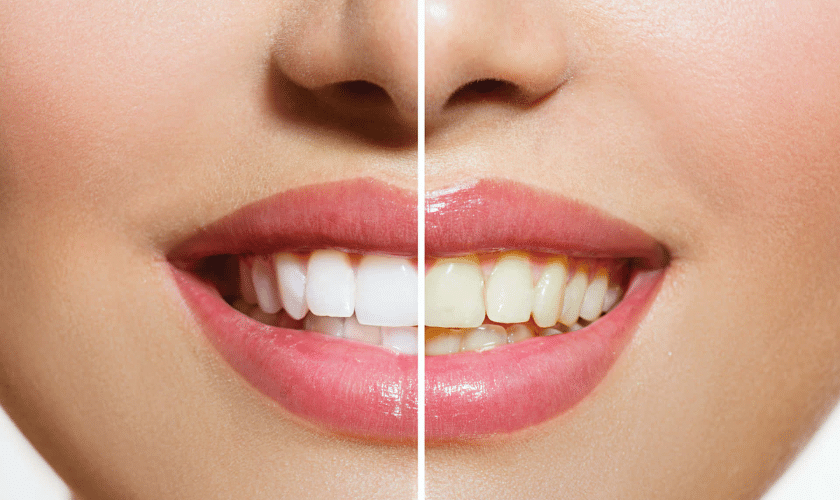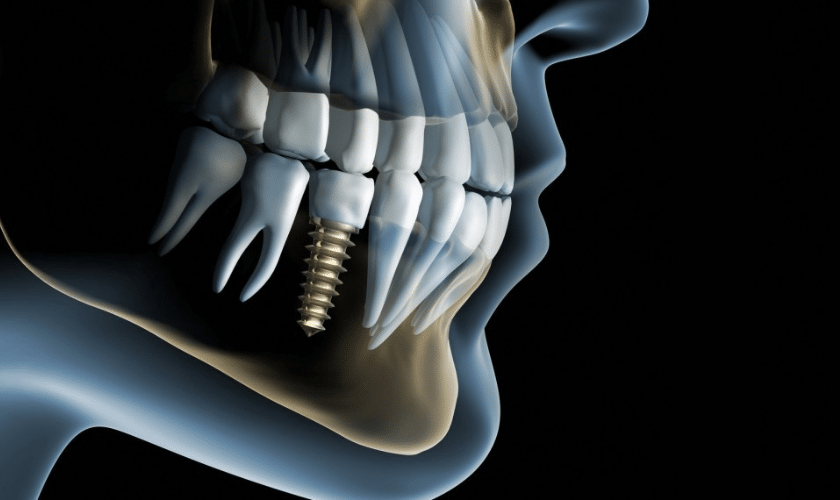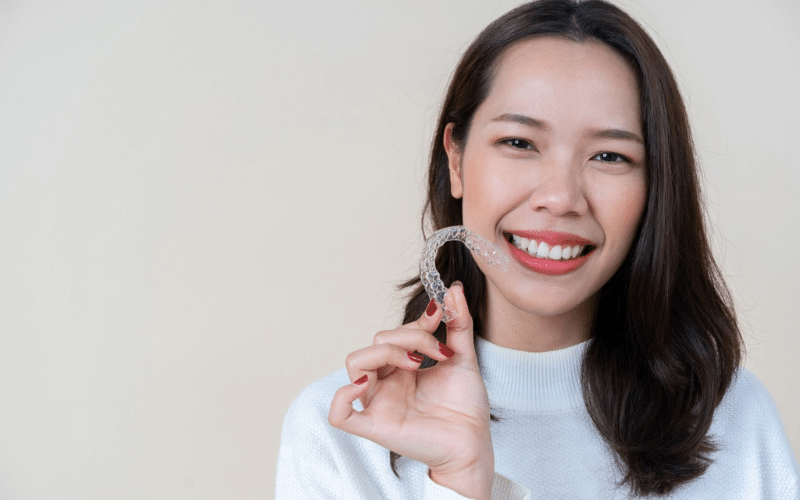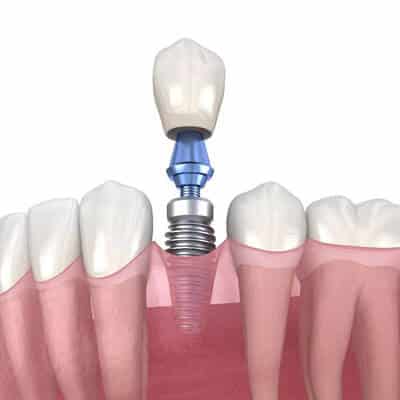
Are you tired of hiding your smile in photographs? Do you wish your teeth were brighter and whiter but aren’t sure how to achieve it? The answer lies in understanding the science behind teeth whitening. Many products on the market claim to magically brighten your teeth without any effort, but how do they actually work? In this blog post, we will explore the scientific principles behind teeth whitening and provide you with all the information you need to decide which method is right for you. Get ready to flash that winning smile with confidence!
What is Teeth Whitening?
When it comes to teeth whitening, there are a lot of myths and misconceptions out there. Here, we’re setting the record straight on how teeth whitening works. The first thing to know is that there are two main types of teeth whitening: bleaching and non-bleaching. Bleaching products use chemicals to break down stains, while non-bleaching products rely on a physical or mechanical action to remove stains. The most common type of bleaching product is hydrogen peroxide. Hydrogen peroxide breaks down into water and oxygen when applied to the teeth. The oxygen then penetrates the enamel and dentin, breaking up stain molecules.
- There are two main types of non-bleaching teeth whiteners: abrasives and polishers. Abrasives physically scrub away stains, while polishers use friction to remove surface stains.
- Teeth whitening is not a one-time treatment; it typically requires multiple sessions to achieve the desired results. The number of sessions required depends on the severity of the staining and the desired level of whiteness.
- Most over-the-counter teeth whiteners contain lower concentrations of bleaching agents than those used by dental professionals. As such, they may require more treatments to achieve the same results.
Source – Colgate US
The Different Types of Teeth Whitening
- There are a few different ways that people can whiten their teeth. The most common methods are bleaching, polishing, and laser treatments.
- Bleaching is the most common method of teeth whitening. This process uses a bleaching agent, usually hydrogen peroxide, to remove stains and discoloration from the teeth. The bleaching agent is applied to the teeth and left on for some time before being rinsed off.
- Polishing is another standard method of teeth whitening. This process uses a gritty paste or powder to scrub away surface stains on the teeth. Polishing can be done at home with over-the-counter products or at the dentist’s office.
- Laser treatments are the most expensive option for teeth whitening. A laser breaks up stained molecules in the tooth enamel to remove them more easily. Laser treatments are usually done at the dentist’s office.
How Teeth Whitening Works
- When teeth whitening, also called bleaching, first became popular in the 1980s, people used harsh chemicals to lighten their teeth. This process often resulted in tooth sensitivity and other side effects. Today’s teeth whitening products are much safer and more effective.
2. There are two main types of teeth whitening: internal bleaching and external bleaching. Internal bleaching is used to treat discoloration that occurs inside the tooth. This type of discoloration is usually caused by trauma or taking certain medications. External bleaching is used to treat discoloration on the surface of the tooth. The most common cause of this discoloration is staining from food, drinks, or tobacco products.
3. Teeth whitening products contain one or more active ingredients that help to break down stains and make teeth appear brighter. The most common active ingredient in these products is hydrogen peroxide. Hydrogen peroxide works by breaking down into oxygen molecules and water. These oxygen molecules penetrate the enamel and break down stains into smaller pieces, making them less visible.
To get the best results from teeth whitening, it’s important to follow the directions on the product label carefully. Be sure to use a pea-sized amount of gel or strips that cover all visible surfaces of your teeth. You may need to repeat the treatment several times to achieve your desired level of whiteness.
Teeth Whitening Recipes
- Teeth whitening is a popular cosmetic dentistry procedure. The results can be pretty dramatic, and there are several different ways to achieve them. But how does teeth whitening work?
- There are two main types of teeth whitening: bleaching and non-bleaching. Bleaching involves using a chemical agent to remove stains from the teeth, while non-bleaching procedures rely on physical or mechanical means to remove surface stains.
- One of the most common bleaching agents is hydrogen peroxide. When this compound comes into contact with the tooth enamel, it breaks into water and oxygen. The oxygen then reacts with the staining molecules in the enamel, causing them to break down and be removed from the surface of the teeth.
- There are several ways to apply hydrogen peroxide to the teeth, including whitening strips, gels, and toothpaste. The concentration of hydrogen peroxide in these products varies, and higher concentrations will produce faster and more dramatic results. However, they can also increase the risk of side effects such as tooth sensitivity and gum irritation.
- Non-bleaching procedures for teeth whitening include polishing and abrasive cleaning. These methods work by physically removing surface stains from the teeth without changing their color. They are generally considered safe for most people, although they may not be as effective as bleaching in achieving white teeth.
Alternatives to Teeth Whitening
- There are several ways to achieve brighter teeth, including at-home teeth whitening kits and in-office treatments. However, not everyone is a candidate for teeth whitening. For instance, people with sensitive teeth or gums may experience discomfort during treatment. In these cases, there are alternative methods for achieving brighter teeth.
- One such alternative is microabrasion, which uses a mildly abrasive substance to remove surface stains from teeth. This procedure is usually performed by a dentist or dental hygienist and does not require bleaching agents.
- Another alternative is veneers, which are thin porcelain shells bonded to teeth’ front surfaces. With whitening treatments, veneers can cover up deep stains that cannot be removed.
- If you are considering alternatives to professional teeth whitening, talk to your dentist first. He or she can help you determine which treatment will best suit your needs and ensure you achieve desired results.
Conclusion
Teeth whitening is an increasingly popular cosmetic procedure that can have great results. With the right technique, you can make your smile up to several shades brighter in a short amount of time. While some treatments may be more effective, it’s important to understand how teeth whitening works and what products are on the market before deciding which one is best for you. Knowing the science behind teeth whitening will help you make an informed choice when deciding how to achieve your desired result.

